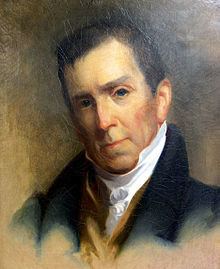Preceded by See below Succeeded by See below Name William Darlington | Preceded by See below Role Botanist Succeeded by See below | |
 | ||
Born April 28, 1782Chester County, Pennsylvania ( 1782-04-28 ) Education University of Pennsylvania Books American Weeds and Useful Plants: Being a Second and Illustrated Edition of Agricultural Botany | ||
William Darlington (April 28, 1782 – April 23, 1863), was an American physician, botanist, and member of the U.S. House of Representatives from Pennsylvania.
Contents
Early life and education
William Darlington (cousin of Edward Darlington and Isaac Darlington, second cousin of Smedley Darlington) was born in Birmingham, Chester County, Pennsylvania. He attended Friends School at Birmingham and spent his youth on a farm. He became a botanist at an early age, studied medicine, and graduated from the medical department of the University of Pennsylvania in Philadelphia in 1804. He went to the East Indies as ship’s surgeon in 1806. He returned to West Chester, near Birmingham, in 1807 and was a practicing physician there for a number of years. He raised a company of volunteers at the beginning of the War of 1812 and was major of a volunteer regiment.
Political and later career
Darlington was elected as a Democratic-Republican to the Fourteenth Congress. He was again elected to the Sixteenth and Seventeenth Congresses. He was appointed canal commissioner in 1825, and served as president of the West Chester Railroad.
He established a natural history society in West Chester in 1826 and published several works on botany and natural history. His published works include Mutual Influence of Habits and Disease (1804), Flora cestrica: an attempt to enumerate and describe the flowering and filicoid plants of Chester County in the state of Pennsylvania (1837) and Agricultural Botany (1847). The degree of L.L.D. was conferred on him by Yale University in 1848, and he was awarded a Doctor of Physical Science in 1855 by Dickinson College. The California pitcher plant, Darlingtonia californica, was described by John Torrey in 1853 and named in his honor.
He served as director and president of the National Bank of Chester County from 1830 to 1863. He died in West Chester in 1863, and was interred in Oakland Cemetery.
